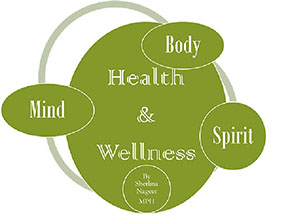While the norm in most places nowadays is to run into a pharmacy and pick up some medication if one is feeling ill, the truth is that pharmacies, as we know them, have only been around for a couple hundred years. People, however, have been on planet Earth for thousands of years. What then did our ancestors use for medicine when they got sick? The answer, which many people have forgotten, is that many of the original medicines were plant-based. Humans, through trial and error, careful observation of the animals around them, and experimentation, learned over time which plants could heal and which could harm. This knowledge, obviously, was very valuable and carefully passed on from generation to generation.
Today, a significant number (40% – 50%) of prescription medicines still contain extracts from plants, while many other drugs ( 50% – 70% of those developed in the last 25 years) contain plant derivatives – chemicals made in a laboratory but based on elements found in nature. Aspirin, for example—one of the most well-known and commonly used drugs in the world—is based on a chemical found in the willow tree bark. Other plant-based medicines are used to treat all kinds of illnesses from cancer, heart disease, malaria, asthma, diabetes, hypertension, to pain management and depression even.

Records detailing cannabis’s medicinal uses have been found as far as 2737 BC (by Emperor Shen Neng of China), as well as in numerous ancient Egyptian papyrus, Indian Ayurvedic texts, Greek and Roman medical references, and other records of civilizations ranging from Asia to the Middle East, North Africa, Europe, South and North America; worldwide, basically. The root, seeds, and leaves are all useful, with traditional Chinese medicine recommending using juice from the leaves to fight tapeworms and powder from the seeds against constipation and hair loss. Egyptian papyrus describes its help with sore eyes and haemorrhoids while Ayurvedic medicine used it to combat insomnia, headaches, anxiety, and numerous gastrointestinal disorders. Arabic physicians used cannabis from the 8th to 18th centuries, recognizing its anti-inflammatory, anti-epileptic, anti-fever, and anti-vomiting properties. Cannabis’s use in pain management was also widely documented, with evidence showing that numerous people, including the Vikings and medieval Germans used it for pain relief pain during childbirth, toothaches, and for minor surgeries. The Ancient Greeks also used cannabis in veterinary medicine, to dress wounds and sores on their horses.
In recent times however, there has been a war on cannabis, led primarily by the United States. Ironically, in 1619, the legislature of the state of Virginia had passed a law requiring every farmer to grow cannabis (the hemp variety). The fear of marijuana—the dried flowers and leaves of the cannabis plant and the least potent, most widely available and used of all the cannabis products—only dates back to the 1930’s, and was triggered by an influx of Mexican migrants who used the plant. Ignorant racist fear, along with widespread unemployment during the Great Depression led to the blaming of marijuana-using Mexicans for all kinds of crimes and the eventual passage of laws banning marijuana use and cultivation in the US. The industrial variety of cannabis—hemp—was also banned.
A few decades later, in the 1970s calls for decriminalization began to be heard but various forces including conservative politicians, concerned parents, anti-hemp businesses, pharmaceutical corporations, and others pushed back, arguing (even without any concrete evidence) that marijuana was a ‘gateway drug’ that would lead to the abuse of other ‘harder’ drugs, which could see permanent brain damage. The ‘War on Drugs’ became a massive operation in the 1980s sucking up a huge amount of resources and spreading to numerous countries outside the US. Foreign aid became linked to countries’ willingness to go along with American drug policies and the demonization of cannabis and persecution of marijuana users became even more widespread, even in places which had never before had such laws. In just a few decades, hundreds of thousands of people became criminals for the simple act of using, growing, and selling a plant which for centuries before, had been used freely, openly, and widely.
Cannabis does have psychotropic properties. It does cause changes in one’s mood, perceptions, and consciousness. However, so do numerous other substances, many of which like alcohol, as well as other plant-based substances such as tobacco, caffeine, cocoa, are legal. In fact, alcohol and tobacco abuse often does much more harm than marijuana use. Unfortunately, much of the ‘research’ from which the anti-cannabis sentiment and laws sprung was not based on valid scientific research but concocted by persons and groups intent on a particular criminalization and economic agenda. In recent years, much of this anti-cannabis research has been revealed to be flawed and current data backs up what our ancestors always knew – cannabis does indeed have significant medicinal properties. It is not a gateway drug. Cannabis users are not criminals; crime rates have not increased in places that have decriminalized cannabis. People suffering from cancer, chronic pain, anxiety, depression, and other illnesses have been shown to benefit dramatically from medicinal cannabis use. As a migraine sufferer, I personally have found cannabis to be immensely therapeutic. Hemp products also remain more sustainable and environmentally friendly than their petroleum-based competitors. It is high time that we rid ourselves of the nonsensical notions and laws and use all our brain cells to address the real problems in our society. Ending the stigmatization of the cannabis plant and persecution of its users is one step forward in building a healthier and more just society.
Sherlina can be contacted at ssnageer@yahoo.com




